Search the Special Collections and Archives Portal
Search Results
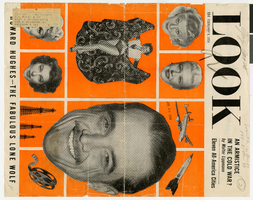
Magazine cover, LOOK, Howard Hughes - The Fabulous Lone Wolf, February 9, 1954
Date
1954-02-09
Archival Collection
Description
Cover of 1954 LOOK magazine with headline article "Howard Hughes - The Fabulous Lone Wolf."
Image
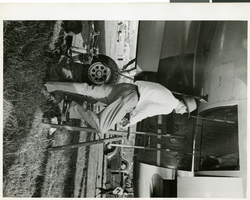
Photograph of Hughes entering his plane for inspection, approximately 1945-1955
Date
1945 to 1955
Archival Collection
Description
Howard Hughes inspecting one of his planes. Image taken circa late 1940s/early 1950s.
Image
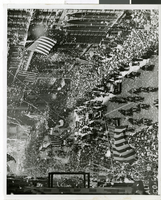
Photograph of Howard Hughes and his crew at a parade, New York, July 15, 1938
Date
1938-07-15
Archival Collection
Description
The black and white view of Howard Hughes and his crew at a parade after he completed his Round-The-World flight in New York.
Image
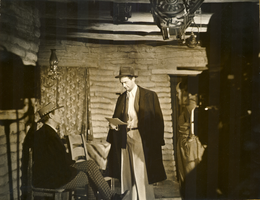
Photograph of Howard Hughes with Walter Huston on the set of The Outlaw, Hollywood, circa 1941
Date
1940 to 1941
Archival Collection
Description
Howard Hughes (holding script) talks with actor Walter Huston (sitting, at the left) on the set of the motion picture "The Outlaw."
Image
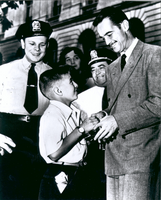
Photograph of Howard Hughes shaking hands with a young fan, Washington, D.C., circa 1947
Date
1947 to 1948
Archival Collection
Description
Howard Hughes shakes hands with a young fan, probably after the Senate War Investigating Committee hearings in Washington, D.C., August 1947. Two police officers and a woman onlooker stand nearby.
Image

Aerial photograph of Hughes Flying Boat en route to Terminal Island, California, 1946
Date
1946
Archival Collection
Description
A section of Howard Hughes' "Spruce Goose" or "Flying Boat" being moved (with a police escort) from the Hughes Aircraft plant in Culver City, California to Terminal Island in the Los Angeles Harbor where the plane was assembled in June of 1946.
Image
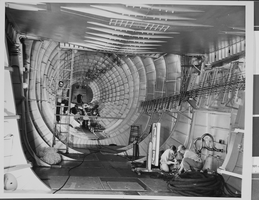
Photograph of Howard Hughes' Flying Boat, Long Beach, California, November 02, 1947
Date
1947-11-02
Archival Collection
Description
Description given with photo: "Howard Hughes Flying Boat at Terminal Island. (Inside fuselage to the rear taken from forward section) Long Beach, Cal."
Image
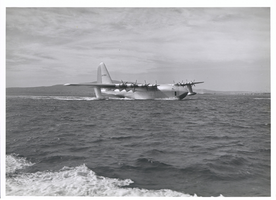
Photograph of the Hughes Flying Boat skimming the water in the Los Angeles Harbor, November 2, 1947
Date
1947-11-02
Archival Collection
Description
The Hughes Flying Boat taking off (or landing) in the Los Angeles Harbor, November 2, 1947. Los Angeles Harbor (Calif.)
Image
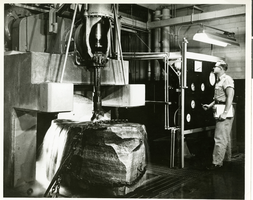
Photograph of an employee testing Hughes Tool Company drill bits, 1950s
Date
1950 to 1960
Archival Collection
Description
Transcribed from attachment to photo: "TOUGH TEST - A hard formation drilling test is begun in the big laboratory at Hughes Tool Company, Houston, Texas, where any drilling condition found anywhere in the world can be duplicated. Here, where the vast majority of rock bits used in the U. S. and Canada are produced, is the cornerstone of Howard Hughes' industrial empire; it was principally the income from the oil drilling equipment company which enables Hughes to branch out into many other fields."
Image

Photograph of a parade procession for Howard Hughes, New York, July 15, 1938
Date
1938-07-15
Archival Collection
Description
Description printed on photograph's accompanying sheet of paper: "Howard Hughes receiving the plaudets of the crowd during his reception in New York City. 7-15-38 (Press Association)."
Image
Pagination
Refine my results
Content Type
Creator or Contributor
Subject
Archival Collection
Digital Project
Resource Type
Year
Material Type
Place
Language
Records Classification
